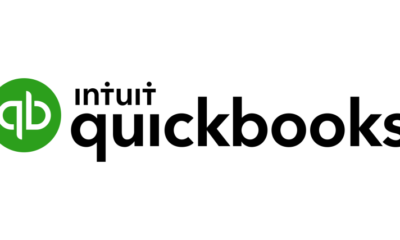Have you ever wondered about the safety and security of your life insurance policy? Who ensures that your policy is transparent, with all necessary information and no misselling? Which authority presides over the insurance sector? This is where the IRDAI (Insurance Regulatory and Development Authority of India) comes into the picture. Here is some more information about the apex body of the insurance industry and the reason why the sector is well-regulated to date.
What is the IRDAI?
By insurance, we usually mean a specific financial arrangement or system where the insurance company agrees to offer a guarantee or compensation for any listed damage, loss, death, or ailment in return for the payment of a particular amount by the policyholder as the premium. Insurance is a must-have for any individual, particularly life and health insurance. Initially, the Indian Government had the responsibility of regulating the insurance industry. However, a separate regulator was set up in 1999 in order to ensure better regulation and governance of the industry and its stakeholders. This was the IRDAI, which stands for the Insurance Regulatory and Development Authority of India.
IRDAI regulates the entire insurance sector. It has a primary objective of safeguarding the interests of all policyholders while contributing towards the expansion of insurance countrywide. It is not only the custodian of life insurance but also other general insurance products and companies.
What are its Functions?
The IRDAI carries out several functions. These functions are of immense importance, especially when we consider the number of policyholders in the country and how their interests have to be protected with total transparency and stringent operational protocols throughout the sector. On that note, here’s taking a look at the functions and roles of the IRDAI:
- It issues registration certificates for all life insurance companies while renewing, modifying, suspending, withdrawing, or cancelling registration as required
- It works to secure the interests of all policyholders with regard to policy assigning, insurable interest, nominations, surrender values of policies, settling insurance claims, and other terms and conditions that apply to insurance agreements
- The IRDAI is responsible for stipulating the code of conduct, qualifications, and training necessary for insurance agents or other intermediaries
- It ensures that this code is upheld by all loss assessors and surveyors as well
- The IRDAI ensures greater efficiency and transparency in the sector while regulating and promoting entities linked to the business
- Fees and other charges are levied by the IRDAI in order to carry out the purposes of the IRDAI Act, 1999.
- Some of its functions also include inquiries, inspections, investigations, and periodic audits of insurance intermediaries, insurance companies, and other entities involved in the industry
- The control and regulation of terms and conditions, rates, and other benefits provided by companies in the general insurance sector is also the responsibility of the IRDAI
- The IRDAI outlines the regulations for maintaining all books of accounts while requiring these statements of account from all intermediaries and insurance companies alike
- It tracks fund investments by insurers while also governing the maintenance of the margin of solvency by these companies. According to Section 64VA of the Insurance Act of 1938, every life insurer is required to keep a Required Solvency Margin. The Required Solvency Margin, as set forth by the IRDAI, is the margin by which an insurance company’s capital/assets exceeds its predicted liabilities; in other words, it is a gauge of its financial stability.
- It also judges and settles disputes between insurance intermediaries and insurance companies or between insurance companies and intermediaries
- It supervises the operations of the Tariff Advisory Committee (TAC). The rates, benefits, and other terms and conditions that insurers may provide, are managed and controlled by the TAC. It is an important entity, that has operated under IRDAI since 1999.
- The percentage of premium income of the insurance company for funding the schemes of regulation and promotion of professional entities as per clause (f) is also specified by the IRDAI
- The IRDAI also specifies the percentage of general insurance and life insurance businesses to be carried out by the insurance company in the social or rural segments
As seen above, the IRDAI regulates both life and general (non-life) insurance policies. The former covers the lives of policyholders, while the latter pertains to coverage for health, two and four-wheelers, homes, travel, and a lot more. It is the custodian and regulator of the entire insurance industry. The IRDAI is one of the reasons why customers can trust the insurance industry and its stakeholders. It also helps in keeping fraud and misselling out of the equation as much as possible.
Insurance companies, on their part, have to abide by the regulations framed by the IRDAI while upholding the highest standards of transparency. However, this does not mean that you do not have to do anything on your part while buying your insurance policy. Raising your awareness about life insurance and understanding your life insurance needs is the first step. This should be followed by thorough research and comparison of suitable policies and their issuing companies.
Once chosen, you can use a life insurance premium calculator to understand how much you will be paying for the same. Make sure that the premiums are in your budget, as well as ensure sufficient coverage for you. Finally, after purchasing the policy, ensure that you read through the policy document carefully and understand all the inclusions and exclusions.
Must See
-
Other Sports
/ 4 months agoTransfer: Galatasaray target January move for Onyedika
Turkish Super Lig champions Galatasaray are lining up a January move for Club Brugge...
By Amaka Esther -




Other Sports
/ 4 months agoMan Utd too big for you – Ten Hag told to leave club
Former Tottenham Hotspur star, Darren Bent has claimed that Manchester United are too big...
By Amaka Esther -




Other Sports
/ 4 months agoEPL: Yorke tells Ten Hag not to allow Man Utd star near first team
Manchester United legend Dwight Yorke has told manager Erik ten Hag not to allow...
By Amaka Esther


